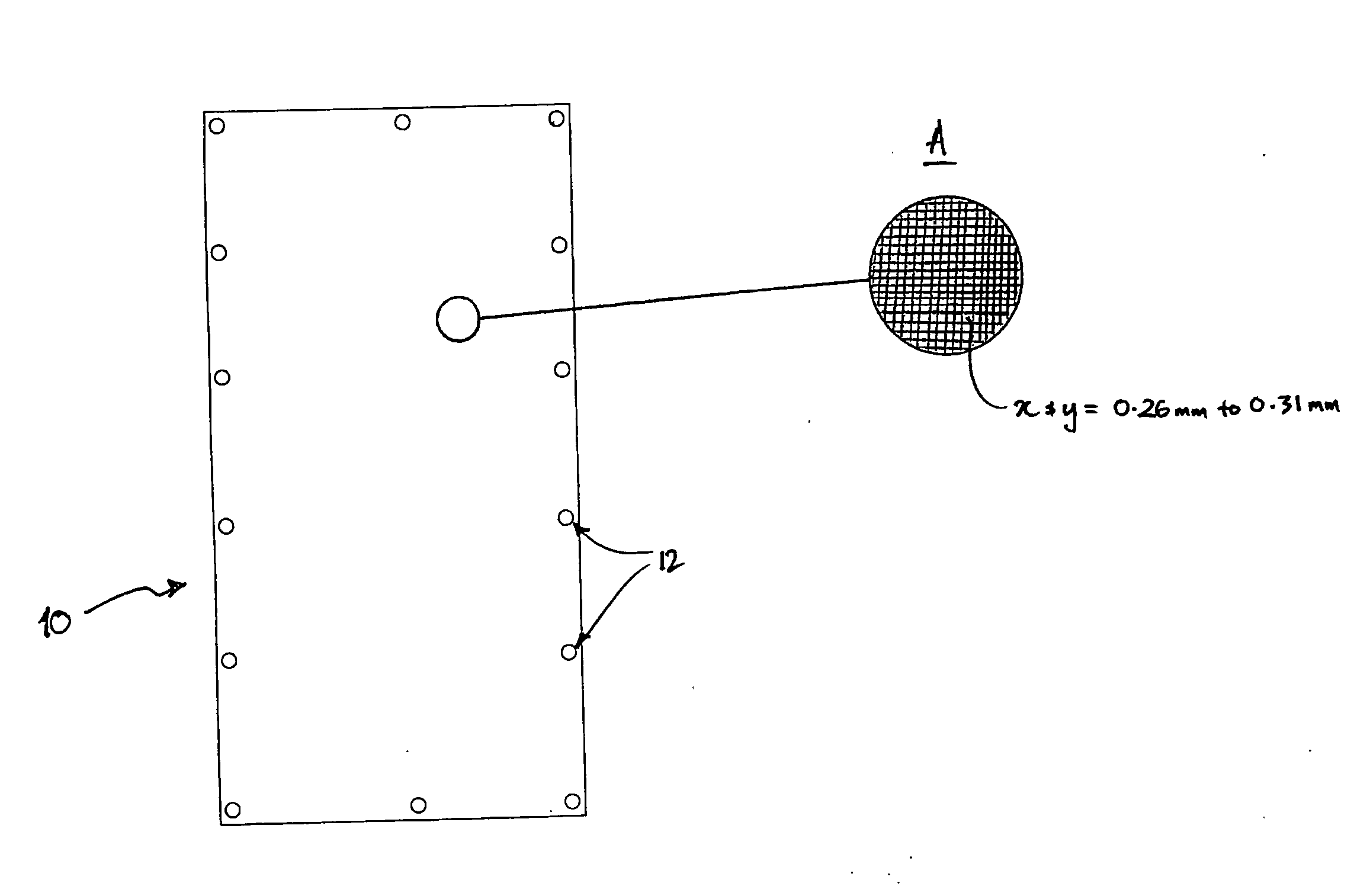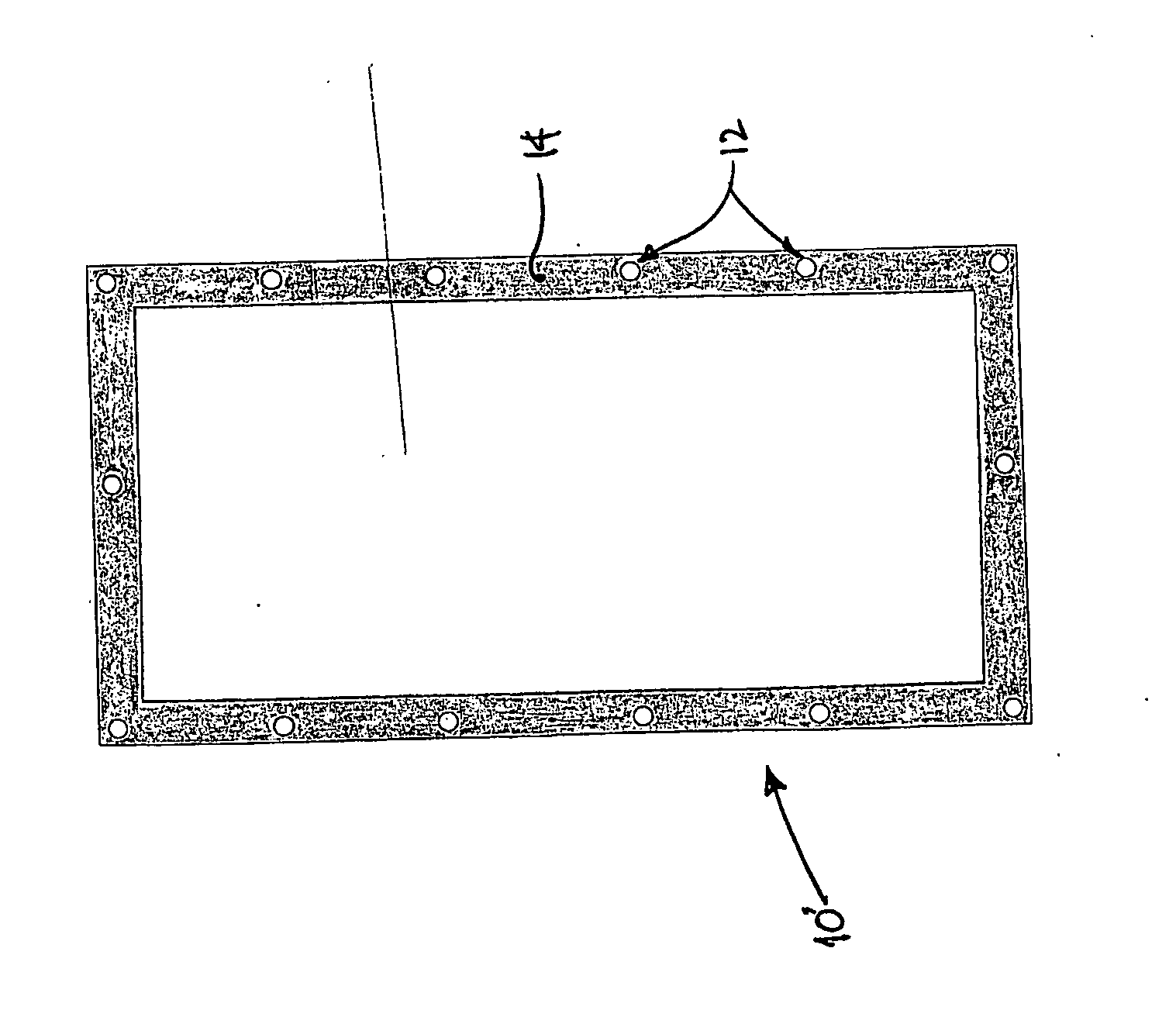Mesh for Screening a User from Direct Impact of a High Pressure Fluid by Diffusing the Fluid Stream
a high-pressure fluid and mesh technology, applied in water supply installation, maintenance and safety accessories, drinking water installation, etc., can solve the problems of high-pressure fluids that are prone to rupture, death or serious injury, and damage to veins, arteries, ligaments, etc., to achieve moderate ozone and ageing resistance, high tensile strength, and abrasion resistance.
- Summary
- Abstract
- Description
- Claims
- Application Information
AI Technical Summary
Benefits of technology
Problems solved by technology
Method used
Image
Examples
example 1
[0059]A non-limiting Example of forming a panel as disclosed herein will now be provided.
[0060]In the panel forming process a mesh comprising a market grade (316 grade) woven stainless steel mesh was cut to an approximate panel size of 1000 mm×1500 mm. A process of hot vulcanising an SBR rubber sheet of approximately 1.5 mm thickness onto the mesh comprised the following steps:
[0061]1. The mesh and the suitably sized SBR rubber sheet were brushed with a cement bonding solution. A suitable bonding solution employed was a “two-pack” rubber cement of Toyo Tyre & Rubber having the manufacturer's code F2444 (UN No. 1287).
[0062]2. The solution was allowed to “tact” off (i.e. go tacky).
[0063]3. The rubber sheet was applied to one side of mesh.
[0064]4. Steps 1-3 were repeated for the other side of the mesh with another suitably sized SBR sheet.
[0065]5. The product from 4, was clamped and autoclave cured (at 150° C. and at a pressure 400 kPa). The autoclave curing time was approximately 30 m...
example 2
[0070]A non-limiting Example of the mesh in use in accordance with the screening method disclosed herein will now be provided.
[0071]Firstly, a mesh for the mesh panel was selected that was suitable for screening against a hydraulic fluid comprising a water-based mixture with mineral oil, (95% water, 5% mineral oil).
[0072]In an underground mining and tunneling trial, it was noted that such a fluid was subjected to high fluid pressures of up to 5000 psi (and sometimes 6000 psi) in fluid lines used to power much of the mining and tunneling equipment. This included fluid lines to the stage loaders, belt headings, roof supports, and cutting machines and shearers. It was observed in a typical longwall mining operation that around 9500 high fluid pressure fluid lines were employed across a longwall of approximately 250 m width and 3 km length. It was further noted that the most common form of fluid line failure was a so-called pinhole failure, whereby an approximately 2 mm pinhole jet ejec...
PUM
 Login to View More
Login to View More Abstract
Description
Claims
Application Information
 Login to View More
Login to View More - R&D
- Intellectual Property
- Life Sciences
- Materials
- Tech Scout
- Unparalleled Data Quality
- Higher Quality Content
- 60% Fewer Hallucinations
Browse by: Latest US Patents, China's latest patents, Technical Efficacy Thesaurus, Application Domain, Technology Topic, Popular Technical Reports.
© 2025 PatSnap. All rights reserved.Legal|Privacy policy|Modern Slavery Act Transparency Statement|Sitemap|About US| Contact US: help@patsnap.com



